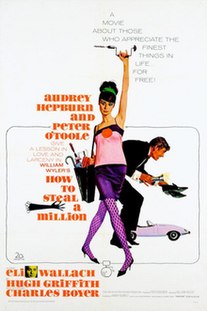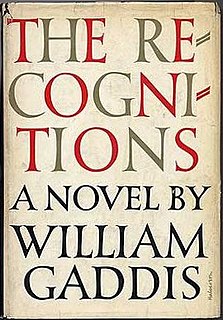 W
WArt forgery is the creating and selling of works of art which are falsely credited to other, usually more famous artists. Art forgery can be extremely lucrative, but modern dating and analysis techniques have made the identification of forged artwork much simpler.
 W
WJacob-Baart de la Faille compiled the first catalogue raisonné of the work of Vincent van Gogh, published in 1928. The catalogue was revised and republished by an editorial committee in 1970, and this version is considered to be the definitive catalogue of van Gogh's work.
 W
WLew Bloom was an American vaudeville performer and stage actor who popularized the comical tramp character. After retiring from the stage in the 1910s, he became a prolific art collector and dealer and also painted his own original works.
 W
WF for Fake is a 1973 docudrama film co-written, directed by, and starring Orson Welles who worked on the film alongside François Reichenbach, Oja Kodar, and Gary Graver. Initially released in 1974, it focuses on Elmyr de Hory's recounting of his career as a professional art forger; de Hory's story serves as the backdrop for a meandering investigation of the natures of authorship and authenticity, as well as the basis of the value of art. Far from serving as a traditional documentary on de Hory, the film also incorporates Welles's companion Oja Kodar, notorious "hoax-biographer" Clifford Irving, and Orson Welles as himself. F for Fake is sometimes considered an example of a film essay.
 W
WFake or Fortune? is a BBC One television series which examines the provenance and attribution of notable artworks. Since the first series aired in 2011, Fake or Fortune? has drawn audiences of 5 million viewers in the UK, the highest for an arts show in that country.
 W
WHow to Steal a Million is a 1966 American heist comedy film directed by William Wyler and starring Audrey Hepburn, Peter O'Toole, Eli Wallach, Hugh Griffith and Charles Boyer. The film is set and was filmed in France, though the characters speak entirely in English. Hepburn's clothes were designed by Givenchy.
 W
WThe Museum of Art Fakes is a museum of faked and forged artworks that opened in Vienna, Austria in 2005. This small, privately run museum in the Landstraße district is the only one of its kind in the German-speaking world.
 W
WPierre Grassou is an 1839 short story by French author Honoré de Balzac (1799-1850) and included in the Scènes de la vie privee section of his novel sequence La Comédie humaine.
 W
WThe Recognitions is the 1955 debut novel of US author William Gaddis. The novel was initially poorly received by critics. After Gaddis won a National Book Award in 1975 for his second novel, J R, his first work gradually received new and belated recognition as a masterpiece of American literature.
 W
WThere Are No Fakes is a Canadian documentary film, directed by Jamie Kastner and released in 2019. Starting with musician Kevin Hearn's lawsuit against the Maslak McLeod Gallery after being informed that a Norval Morrisseau painting he had purchased appeared to be a forgery, the film expands into an exposé of a significant art fraud ring that has produced many fake Morrisseau paintings through the use of forced child labour in sweatshops, in which some of Morrisseau's own surviving family members are complicit; by some estimates, there may be up to 10 times as much fake Morrisseau art on the market as real work.